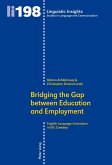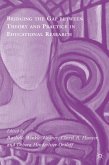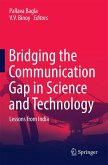This book describes an evaluation of the clinical
facilitators who
supervise trainee nurses on clinical placement. This
is work at the
interface
between higher education and employment. The
literature on
university-community collaboration is reviewed to
establish the
context. The evaluation looked at outcomes, process and
stakeholder perspectives. Outcome measures proved
difficult to
identify. The process was explored through in-depth
interviews with
the twelve clinical facilitators. This established a
two dimensional
model of clinical facilitation. The views of
stakeholders were sought
using interviews and focus groups and a questionnaire
for each
group. This established the perceived utility of
supervisory teaching
methods; the relative value of the persons
encountered by students
and the extent to which the clinical facilitators had
met their
objectives. Clinical facilitators were ranked second
most useful on
placement behind the designated assessor mentor but
ahead of the
university link tutor. The most favored method was
demonstration
of a skill by an expert. The evaluation concluded
with twelve
recommendations for future practice.
facilitators who
supervise trainee nurses on clinical placement. This
is work at the
interface
between higher education and employment. The
literature on
university-community collaboration is reviewed to
establish the
context. The evaluation looked at outcomes, process and
stakeholder perspectives. Outcome measures proved
difficult to
identify. The process was explored through in-depth
interviews with
the twelve clinical facilitators. This established a
two dimensional
model of clinical facilitation. The views of
stakeholders were sought
using interviews and focus groups and a questionnaire
for each
group. This established the perceived utility of
supervisory teaching
methods; the relative value of the persons
encountered by students
and the extent to which the clinical facilitators had
met their
objectives. Clinical facilitators were ranked second
most useful on
placement behind the designated assessor mentor but
ahead of the
university link tutor. The most favored method was
demonstration
of a skill by an expert. The evaluation concluded
with twelve
recommendations for future practice.








